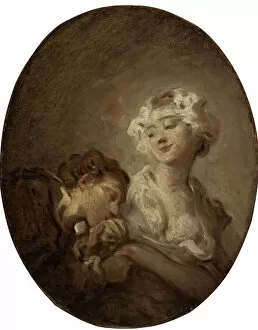1732 1806 Collection
"1732-1806: A Journey through the Artistic Realm of Jean-Honore Fragonard" Step into the enchanting world of Jean-Honore Fragonard
For sale as Licensed Images
Choose your image, Select your licence and Download the media
"1732-1806: A Journey through the Artistic Realm of Jean-Honore Fragonard" Step into the enchanting world of Jean-Honore Fragonard, a renowned French artist who graced the art scene from 1732 to 1806. Known for his exquisite brushwork and captivating compositions, Fragonard left an indelible mark on the art world with his diverse range of masterpieces. One such masterpiece is "The Coquette and the Youth, " a painting that captures fleeting moments of flirtation and desire. With delicate strokes, Fragonard brings to life the playful exchange between two figures lost in their own romantic reverie. In contrast, "The Funeral of Decius Mus" showcases Fragonard's ability to depict dramatic scenes. This powerful composition portrays a solemn funeral procession, evoking emotions of grief and reverence as viewers witness this poignant moment frozen in time. Fragonard's talent extends beyond capturing human emotion; he also excels at depicting religious subjects. In works like "St. Luke" and "St. Jerome, " he skillfully portrays these revered figures with meticulous attention to detail, showcasing his deep understanding of spirituality. Moving away from religious themes, we delve into scenes inspired by everyday life in pieces like "Scene in a Park. " Here, Fragonard transports us to a serene park setting where couples stroll hand-in-hand amidst lush greenery—a testament to his ability to capture both natural beauty and human connection. Orpheus takes center stage in another notable work by Fragonard titled "Orpheus and Eurydice. " Through vibrant colors and dynamic brushstrokes, he depicts Orpheus' desperate attempt to rescue his beloved Eurydice from the clutches of death—an eternal struggle between love and loss brought vividly to life on canvas. Fragonard's fascination with love continues in "Invocation to Love, " where cherubic figures and swirling clouds create a dreamlike atmosphere.



































